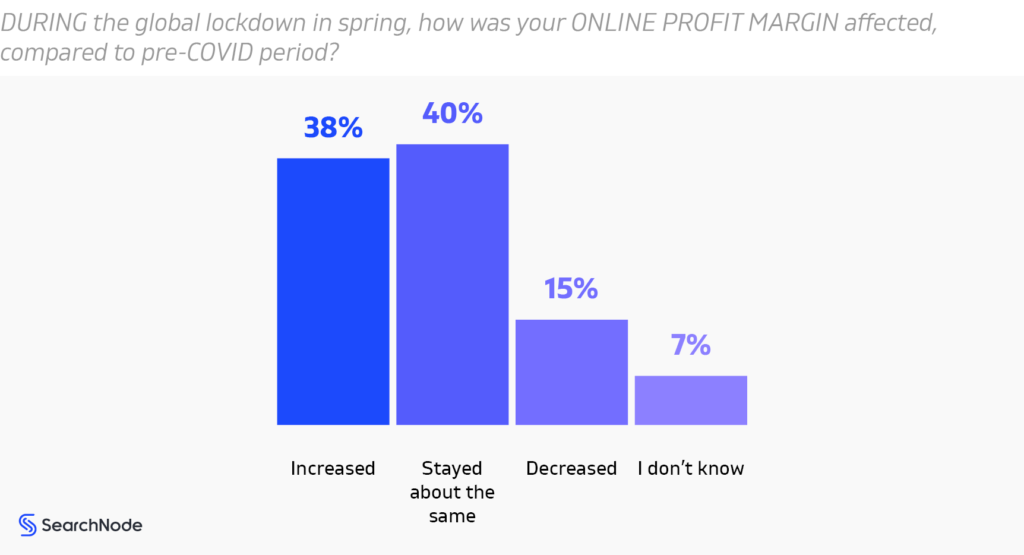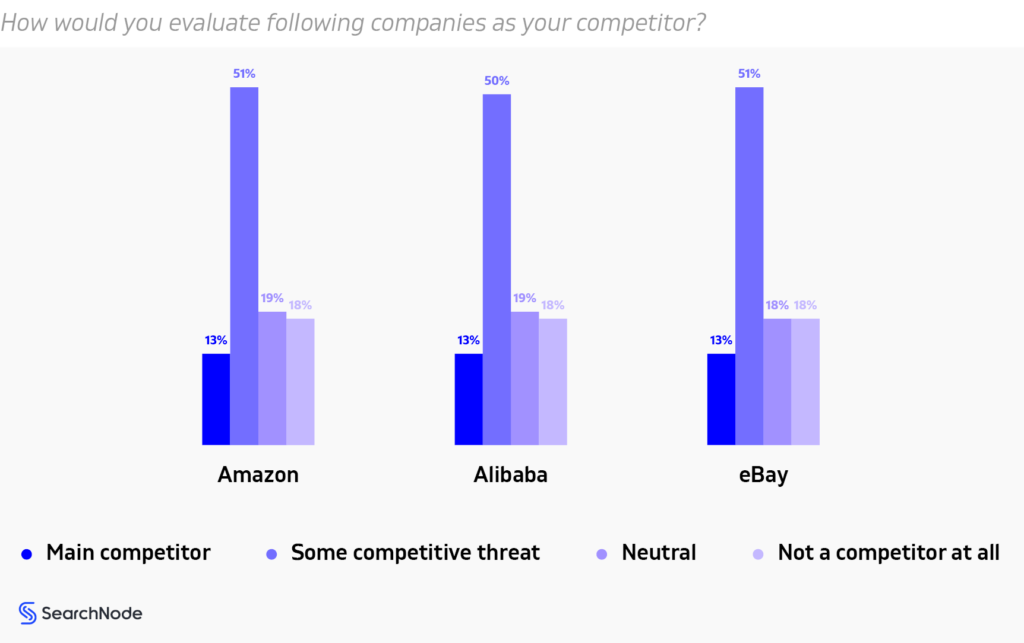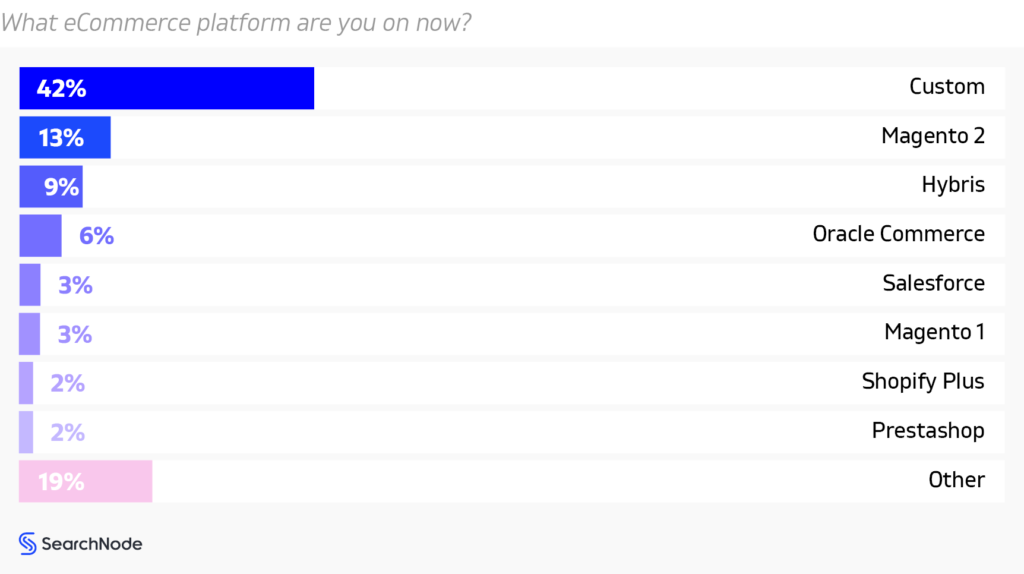These 30 trends define 2021, according to e-merchants
E-commerce continues to be a fast-growing market, and the pandemic has accelerated this process even further. Based on the global report of Ecommerce Trends 2021, we have looked at the most important expected trends for next year, which are definitely worth paying attention to as an online trader.
Online retail sales worldwide have grown significantly since 2014, and industry analysts say this soar will certainly continue until 2023. If an e-merchant manages to catch and ride a new trend in time, he can gain an advantage that he can even overtake his rivals. SearchNode Inc. is also extremely useful in this regard. Its global research, launched in 2019, seeks to prepare online retailers for the future by mapping e-commerce trends. The October survey included nearly 100 e-commerce decision-makers from Europe and North America. The Ecommerce Trends 2021 report aims to gather forward-looking information on current and future trends in e-commerce and how COVID-19 has affected this industry.
Soaring e-commerce
One of the big winners of the restrictive measures taken to curb the coronavirus epidemic was e-commerce. The revenues of the vast majority of companies surveyed were markedly positively affected not only by quarantine but also by the subsequent period. Half of the e-merchants involved in SearchNode Inc.’s global research reported at least doubling their revenue. For the vast majority of respondents, 86 percent of them, online revenues continued to increase even after the closures ceased: for some companies, the change was as high as 200 percent.

Also, 90 percent of respondents recorded at least a smaller increase compared to the pre-pandemic period, and only 6 percent said their income had decreased due to the epidemic. 38% of respondents said their online profit margins increased during the global close.
The main challenges
The situation caused by the epidemic has affected retailers on several levels. Most mentioned an interrupted supply chain among the challenges (this was a problem for 57% of respondents), but meeting demand (43%) was also mentioned by many. In addition, closure (29%), inventory management (28%) and staff shortages (26%) posed new challenges for e-merchants.
Preparing for another closure
Although there was easing worldwide at the time of the survey, it was already known that further tightening could come at the end of the year. 70 percent of online retail executives said they were prepared for a closing similar to the spring of 2020. The survey was therefore also curious about how companies are preparing for another lockdown. Many cited supply chain diversification (39%), expanding e-commerce presence (39%), web infrastructure development (36%), increasing marketing budget (32%), and hiring new employees (29%).
Strategy in the shadow of the epidemic
The authors of the research were also curious about how the overall strategic vision was affected by the pandemic. Most responses (45%) focused on the digital part of the business. According to respondents, e-commerce has increased overall and demand has also increased. Companies had to speed up their operations, adjusting their selections to keep up with new needs. The e-merchants interviewed bought new software or confirmed the old one. Companies have focused more on online marketing channels than ever before and expanded their number.
Fierce competition
E-commerce is a highly competitive market, and the survey also confirmed that rivalry is unchanged: 84% of respondents say competition in the market is extremely fierce. About half of the commentators feel threatened at the competitive level from Amazon, Alibaba and eBay, which are considered the largest in the industry, but only 13 per cent have identified these companies as their main rivals.

Free return
Free returns are an important part of the overall business strategy of online commerce. Customers expect free refunds, especially because of the pandemic. 59% of businesses surveyed said they would offer a free refund to their customers in 2021.
Head to social media
Direct selling on social media is a new strategy that online retail companies should consider. Buying directly from social networks is much more convenient, and the user journey is also much shorter, resulting in fewer cart abandonments, for example. 42% of respondents plan to sell through direct social media in 2021.
Marketing automation
Ecommerce marketing is a monotonous and time consuming job, but new technologies related to automating marketing can help online retailers solve many more things in less time and generate more revenue. This is also felt by the participants: 55% of the respondents said that they will improve the marketing automation of their website and web store next year.
Platform trends
The platform is one of the most important pillars of the online store operation. There are many e-commerce platforms, so choosing the right one is a difficult decision: 90 respondents who responded to the research also mentioned 23 different platforms. The majority, 42 percent, use a custom platform, followed by Magento 2 (13%), Hybris (9%), Oracle Commerce (6%), Salesforce (3%), Magento 1 (3%), Shopify Plus (2%) and Prestashop (2%).

Customization
Among next year’s trends, personalization seems to be the top priority for e-merchants. This tool can significantly increase online store conversions and also improve customer loyalty. 67% of respondents want to invest more in this area next year.
The full report with a detailed analysis of 30 aspects is available in the following article: 30 Ecommerce Trends for 2021 [Survey Report]










